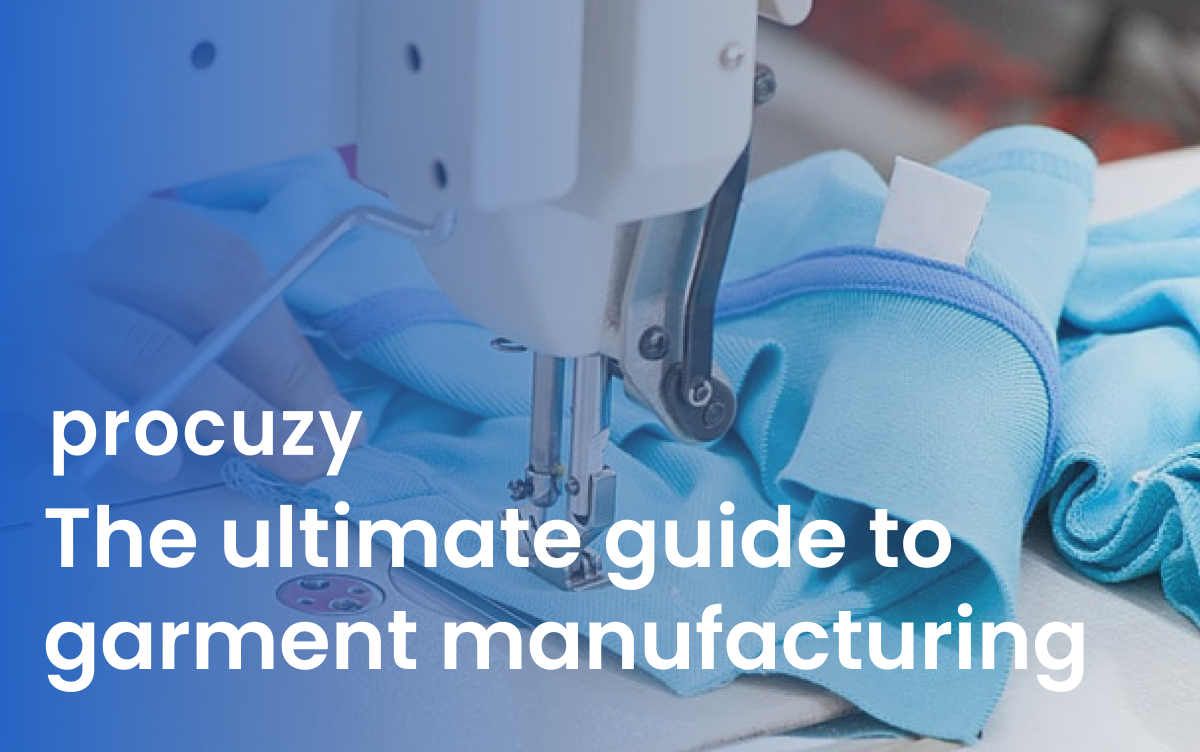
So many of us were caught red handed drawing and sketching dresses and outfits in our childhood. The curiosity of how a design becomes a garment, what goes on inside a garment manufacturing unit, and so many more questions keep popping up in our minds. In this article, we will try to address all the questions that strike your mind regarding garment manufacturing. Keep reading till the end to understand ‘the ultimate step-by-step guide to garment manufacturing”.
Introduction
Nowadays, every cafe, every fast food chain, supermarkets, stores in malls, and others as well have their own printed t-shirts. Even the owners of pets dress their pets in cute little outfits specially designed for them. But how do these outfits and garments get created from a design on paper? Garment manufacturing industry is a remunerative industry with continuous processes going on. If you are a fashion aspirant, or thinking of starting a garment manufacturing unit, you must be aware of the necessary functions and steps to be taken in a garment manufacturing industry. Let's look deep into it.
Overview
Undoubtedly, the garment manufacturing industry is responsible for a huge chunk of GDP in any economy. Not only is it lucrative in nature, it also employs a large number of people. Garments are the daily need of any individual. One cannot go out without putting on any garment. One cannot even stay indoors without any garment. We have garments that we wear on the inside as well, known as undergarments. So, we can see the need for extensive garment manufacturing. Shirts, pants, dresses, blazers, coats, and whatnot are the everyday needs of an individual to survive. The stone age is over and in a civilised world, one cannot stay naked by law. Hence, the garment manufacturing industry draws such popularity.
Steps of garment manufacturing-
In any manufacturing unit, work is conducted in designated steps. Similarly, even in a garment manufacturing industry, steps are followed to get the desired product. Let's look at the steps of garment manufacturing-
STEP 1 - Fabric Selection
In a garment manufacturing unit, fabric selection is the first and foremost step that has to be selecting the fabric. The garment largely depends on the fabric. The finished product depicts the kind of fabric used. Hence, choosing fabric wisely is necessary in the garment manufacturing process. A lot of consumers prefer a certain kind of fabric with a certain style, and resent some sorts of fabric due to reasons like the fabric is uncomfortable etc. Hence, which is the best fabric for a garment must be thought of. Some of the common fabrics used in a garment manufacturing industry are-
Cotton
Polyester
Chiffon
Georgette
Denim
Woolen
Rayon
STEP 2 - Procurement of raw materials
Once the fabric material is selected, the next step is to procure the fabric. The manufacturer needs to have a contact with dealers that provide fabric in large quantities. The procurement of fabric must be done on time in order to avoid any delays.
STEP 3 - Measurements
Once the fabric is decided and is brought down in the manufacturing unit, the next step is to decide in what shape and size it must be cut down in order to make a garment. There are machinery that can cut large fabrics into smaller parts in order to make an outfit. Then, when the fabric is cut down, it is sent to sewing machines operator. The sewing machine operator uses different techniques in the process. Some of the well known sewing techniques in garment manufacturing include-
French seams
Serged seams
Flat felled seams
STEP 4 - Designing
The main step in garment manufacturing is to pick out a design for the garment. This depends on what the usage will be of the garment. For instance, for everyday t-shirts and shirts, cotton is preferred normally. For saree, cotton, silk, georgette etc are the preferred material. In designing, everyday t-shirts are usually plain coloured, or with some prints like cheques, blocks etc. Shirts for work are usually plain, light coloured. Designing the garments accordingly requires the following steps-
Bleaching- Bleaching is very common in a garment manufacturing industry. Through bleaching, a fabric is whitened. Additionally, any other colours are removed from the fabric through bleaching.
Dyeing- Through the process of dyeing, colours are added to a fabric.
Printing-Printing adds design like blocks, cheques, etc to a fabric.
Coating- Through coating, a thin layer of matetial is added on the fabric. This material is usually plastic. The process if coating is done for a variety of purposes. For instance, coating can help make the fabric water-resistant and it can also add a bit of stiffness to the fabric.
Party outfits have some designs in them. Saree are usually embroidered. Designing a garment increases its market value.
STEP 5 - Quality Inspection
In a garment manufacturing industry, when the product is ready, it is sent for quality inspection. The team responsible for inspecting the quality of the garment and whether or not it matches the standard requirements.
STEP 6 - Packaging
After the quality inspection, the product is ready to be packed. The packaging team looks after quality packaging of the garments as the products may go through harsh conditions in the transportation process. Hence, good quality packaging would ensure that the product inside the packet is intact.
STEP 7 - Shipment
The final process is the shipment of finished and packed garments to the customer.
Fulfilment of these steps of garment manufacturing require skilled workforce and good quality machinery and equipment.
Things you need to know about garment manufacturing
If you are thinking about opening a garment manufacturing unit, there are certain things you need to know in order to guarantee success of your business.
The garment manufacturing industry is huge and diverse and there ar many sectors in this industry. Hence, garment manufacturing industry provides employment to many. One can expect varied jobs in the garment manufacturing unit.
The work in the garment manufacturing industry requires physical labour along with the ability to handle machinery and equipment.
The garment manufacturing industry, though employs a large number of people, but does not offer a high payment. The working hours will long and the pay will be low.
You can get firsthand experience on how the things work in a garment manufacturing industry.
Lean Manufacturing in garment industry
If a garment manufacturing industry is thinking of applying the principles of lean manufacturing, they should keep these things in mind-
It is absolutely vital to identify and remove any non-value-added activities in the garment manufacturing process. This means anyunnecessary steps in the manufacturing process must be avoided, for instance, excessive packaging.
It is then necessary to pay attention on streamlining the production process.
Next, it is necessary to make little changes in the process regularly.
Lean manufacturing can prove to be vwry beneficial for a business, given that its done proplerly.
Conclusion
Garment manufacturing is an exciting and work that involves a variety of activities within itself. To make garment manufacturing business a success, you need to know the business in and out. Procuzy aims at providing you with the best knowledge to make your business a hit!
FaQs
Q) Is garment manufacturing easy?
Garment manufacturing involves tons of activities, long hours and comparatively less pay.
Q) What are the steps of garment manufacturing?
Garment manufacturing steps-
Fabric selection
Procurement
Measurements
Designing
Quality Inspection
Packaging
Shipment
To know each in detail, go through the article above or visit https://www.procuzy.com/


